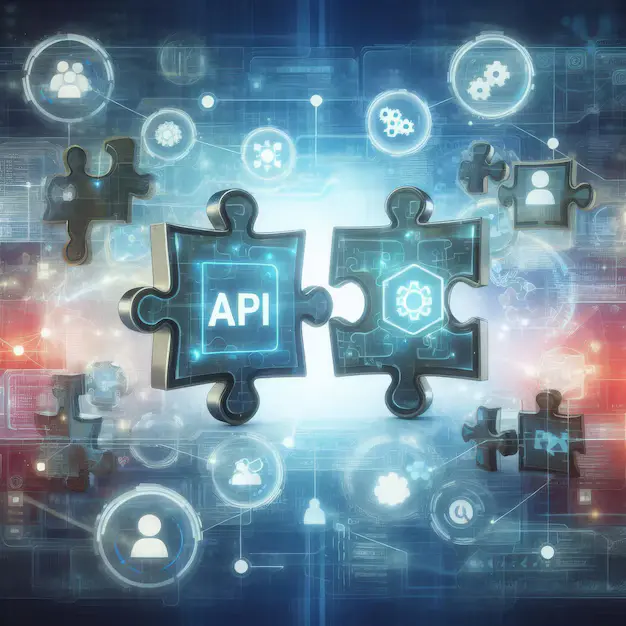The Ultimate Blueprint for Developing an API: Best Practices and Key Considerations for Success

Crafting a successful API isn't just about writing code; it's about meticulously planning and executing a strategy that prioritizes usability, scalability, and maintainability. Before a single line of code is written, a thorough understanding of the API's purpose and target audience is paramount. This involves defining clear use cases, identifying key functionalities, and specifying the data formats (like JSON or XML) that will be used for communication. A well-defined API specification, often using OpenAPI (formerly Swagger), is crucial. This acts as a living contract, documenting endpoints, request/response formats, authentication methods, and error handling, ensuring consistency and facilitating seamless integration for developers.
Choosing the right architecture is another pivotal decision. Microservices offer flexibility and scalability, allowing individual components to evolve independently. However, they introduce complexities in terms of deployment and management. A monolithic architecture, while simpler to develop and deploy initially, can become a bottleneck as the API grows. Careful consideration should be given to factors like expected traffic volume, anticipated future growth, and the team's expertise. Security should be baked into the API from the ground up. Employing robust authentication and authorization mechanisms, such as OAuth 2.0 or JWT, is vital to protect sensitive data. Regular security audits and penetration testing are essential to identify and mitigate vulnerabilities proactively.
Beyond the technical aspects, the developer experience (DX) plays a crucial role in the API's success. Clear, concise, and well-documented APIs are easier to integrate and are far more likely to be adopted. This includes providing comprehensive SDKs in various programming languages, offering interactive documentation (like Swagger UI), and maintaining responsive and helpful support channels. Thorough testing, encompassing unit, integration, and performance testing, is essential to ensure the API's reliability and stability. Continuous integration and continuous delivery (CI/CD) pipelines automate the build, testing, and deployment processes, accelerating development and minimizing the risk of errors. Regular monitoring and logging allow for proactive identification and resolution of issues, ensuring the API remains highly available and performant.
Finally, remember that API development is an iterative process. Gathering feedback from developers using your API is invaluable for identifying areas for improvement and ensuring its continued relevance. Regular updates, incorporating new features and addressing bug fixes, demonstrate your commitment to the API and foster a strong community of users. By adhering to these best practices and considering these key considerations, you can significantly increase the chances of creating a successful and widely adopted API.
Laying the Foundation: Planning Your API Strategy
Before a single line of code is written, a robust API strategy is paramount. This initial phase dictates the success or failure of your API. It's about envisioning the entire lifecycle, from initial conception to long-term maintenance and evolution. Thorough planning prevents costly rework down the line and ensures your API aligns with your overall business goals. Neglecting this stage often leads to APIs that are difficult to use, maintain, and scale. A well-defined strategy ensures your API meets the needs of its intended users, is built on a sound architectural foundation, and is adaptable to future changes and demands. This involves careful consideration of your target audience, the specific problem your API solves, and a clear roadmap for its growth.
Defining Your API's Purpose and Scope
Clearly articulate what problem your API solves and for whom. Define the specific functionalities it will offer and what data it will manage. Avoid feature creep by focusing on a well-defined core set of functionalities. This clarity is essential for guiding the entire development process and preventing unnecessary complexity. A sharply defined purpose ensures the API remains focused and avoids becoming bloated with irrelevant features, improving maintainability and scalability. Start with a Minimum Viable Product (MVP) approach, focusing on delivering essential functionalities first, before expanding to include more advanced features based on user feedback and needs.
Understanding Your Target Audience and Their Needs
Before writing a single line of code, thoroughly understand who will use your API and what problems it will solve for them. Consider their technical expertise, the types of applications they'll build, and their expected frequency of use. This informs crucial design decisions, ensuring your API is both user-friendly and effective.
Choosing the Right Architecture (REST, GraphQL, gRPC, etc.)
The architectural style significantly impacts your API's scalability, performance, and ease of development. REST is widely used and well-understood, while GraphQL excels at fetching specific data, and gRPC offers high performance for internal services. Carefully weigh the pros and cons of each before making your choice, considering factors like data complexity, performance requirements, and developer familiarity.
Versioning Your API for Future-Proofing
APIs evolve. Planning for versioning from the outset prevents breaking changes from disrupting existing integrations. Consider semantic versioning (e.g., v1, v2) and provide clear documentation on deprecation policies to allow developers ample time to adapt their applications.
Selecting the Appropriate Technology Stack
The technologies you choose for building your API (programming language, framework, database) influence performance, scalability, and maintainability. Select technologies that align with your team's expertise and the project's requirements, considering factors like community support, available libraries, and security considerations.